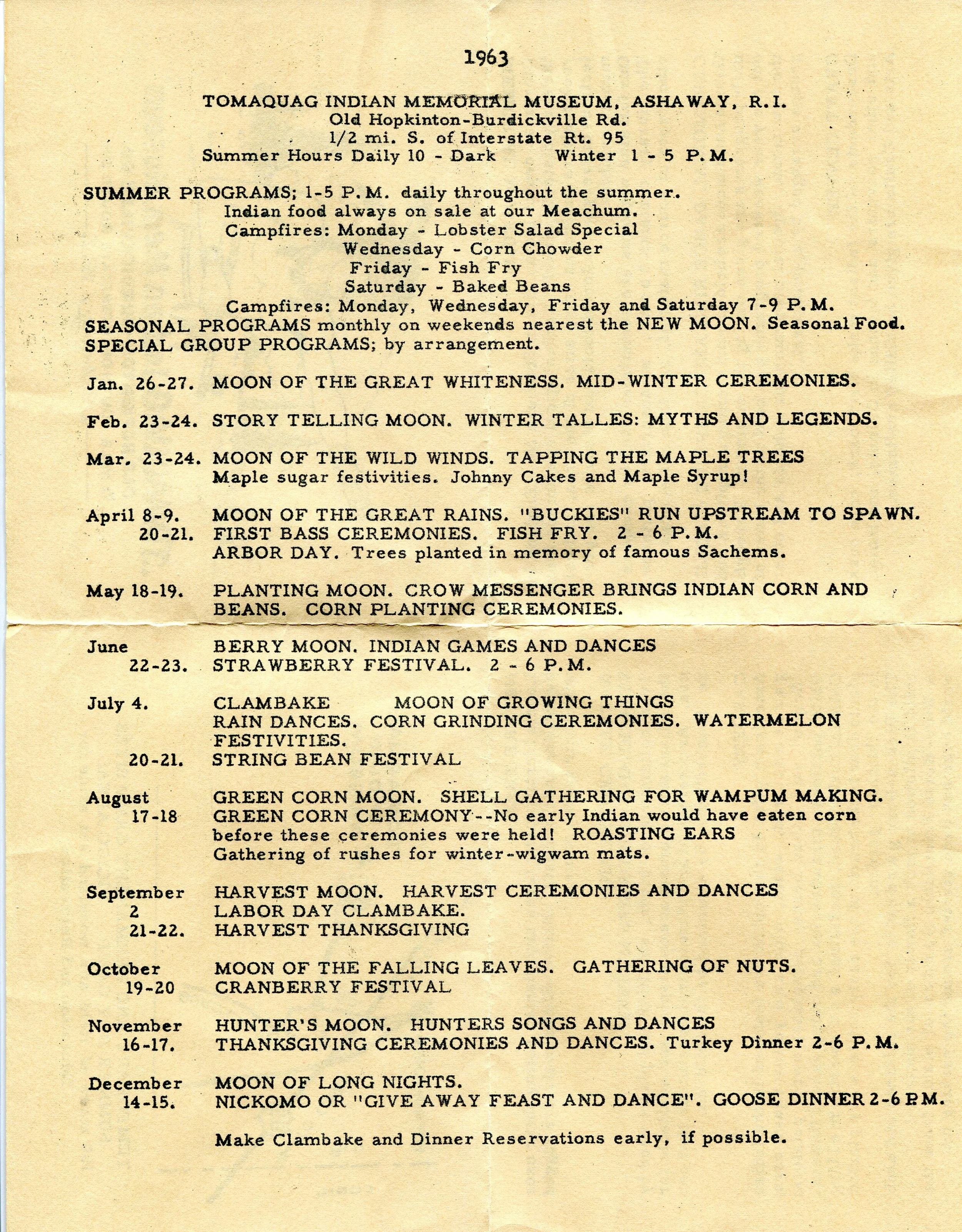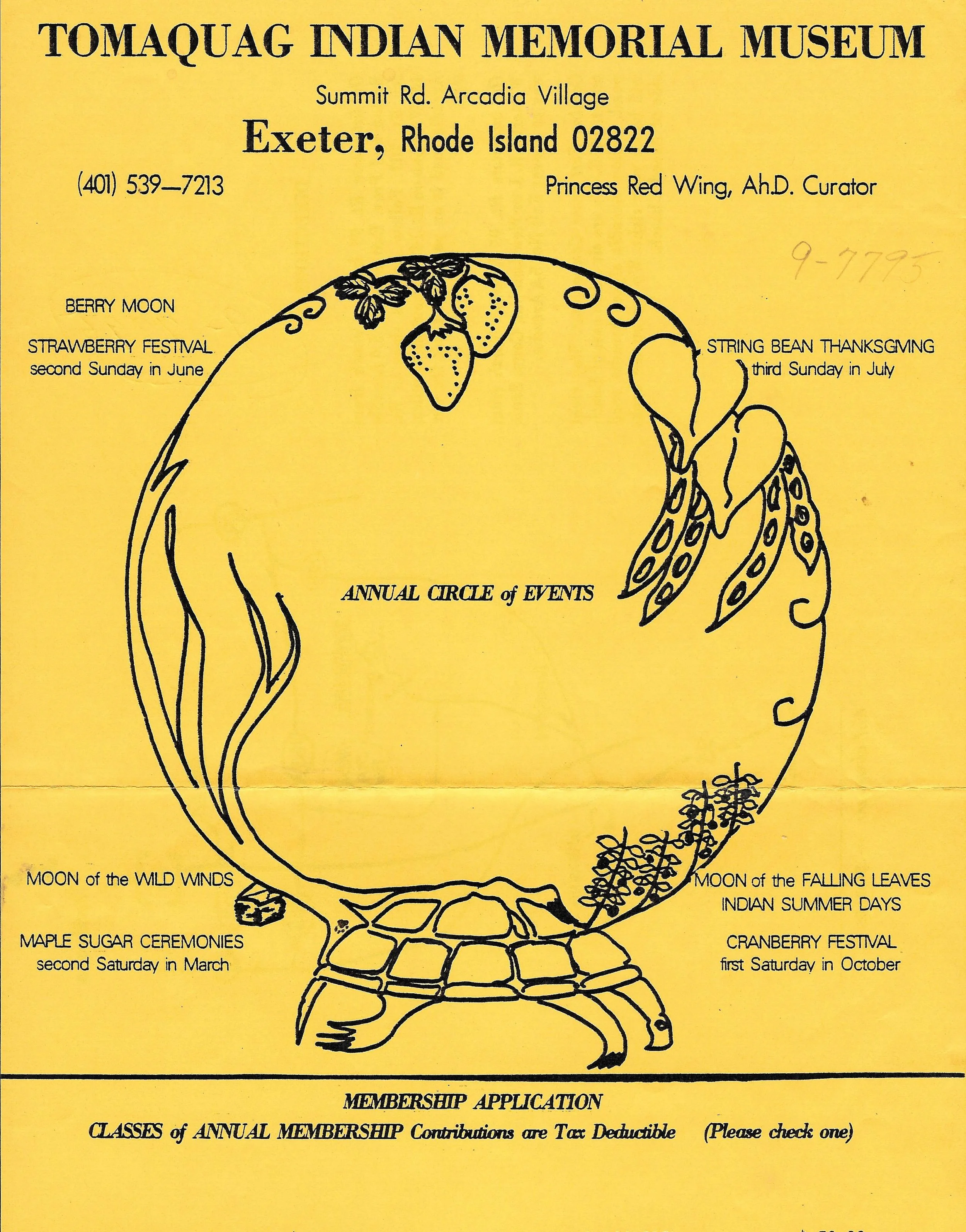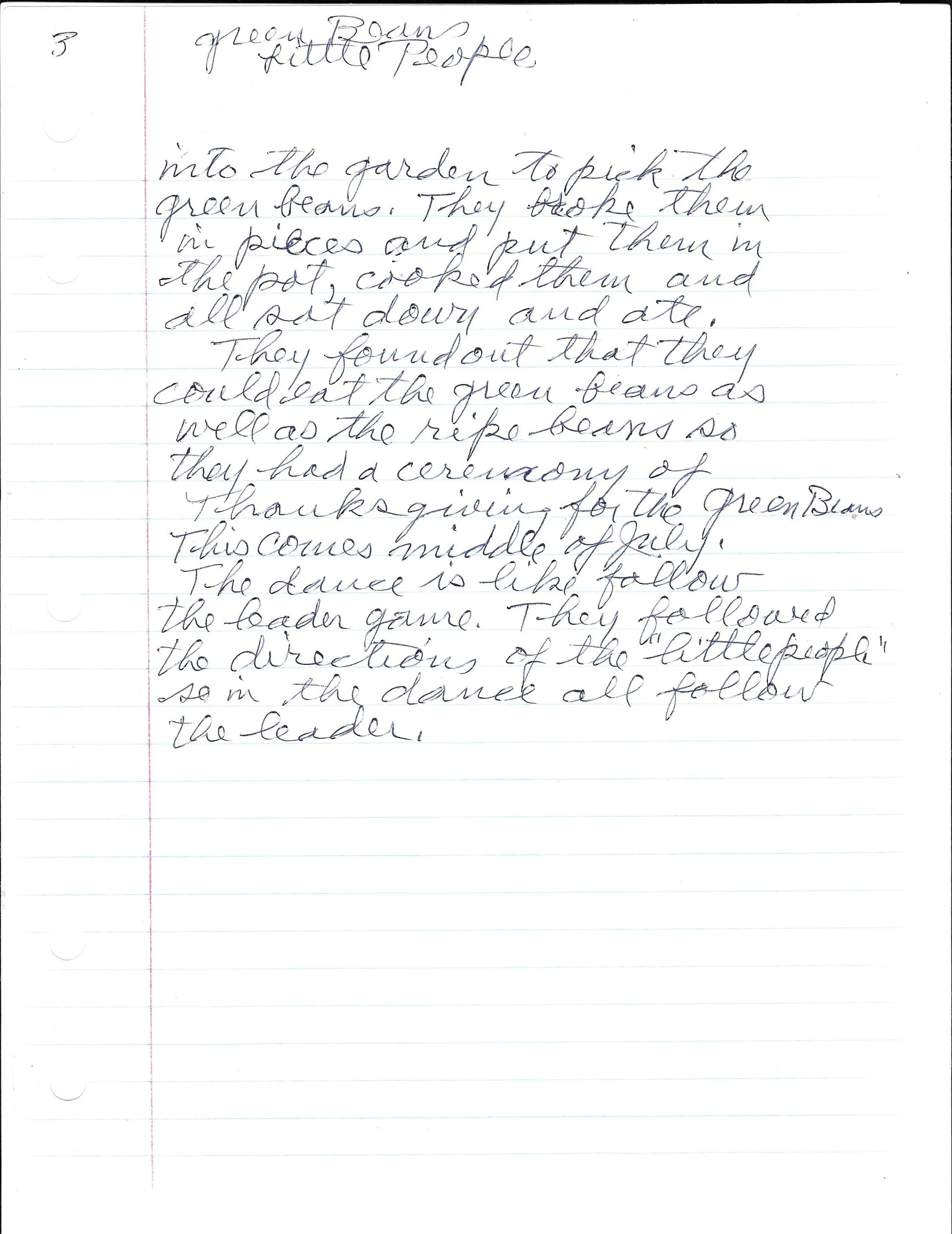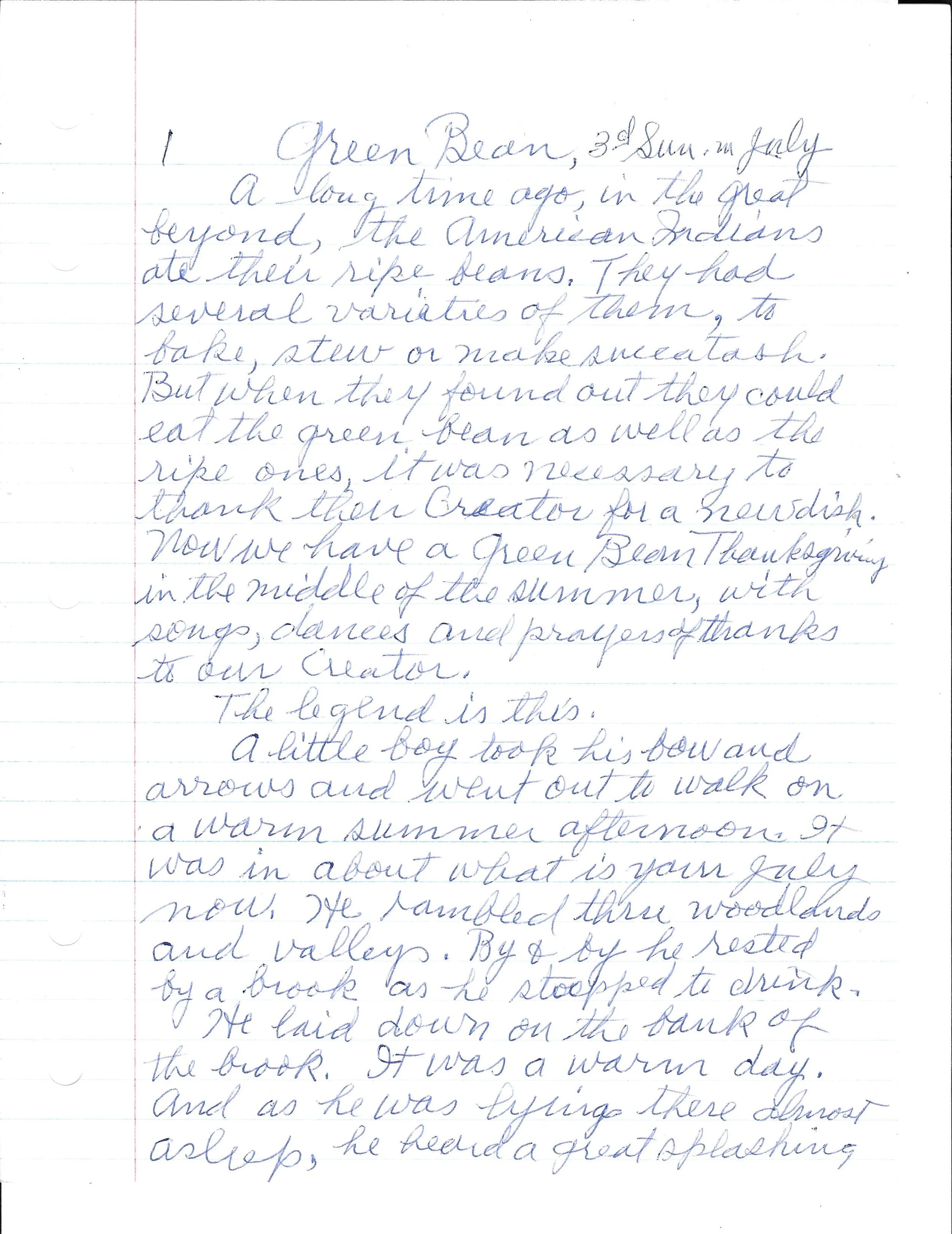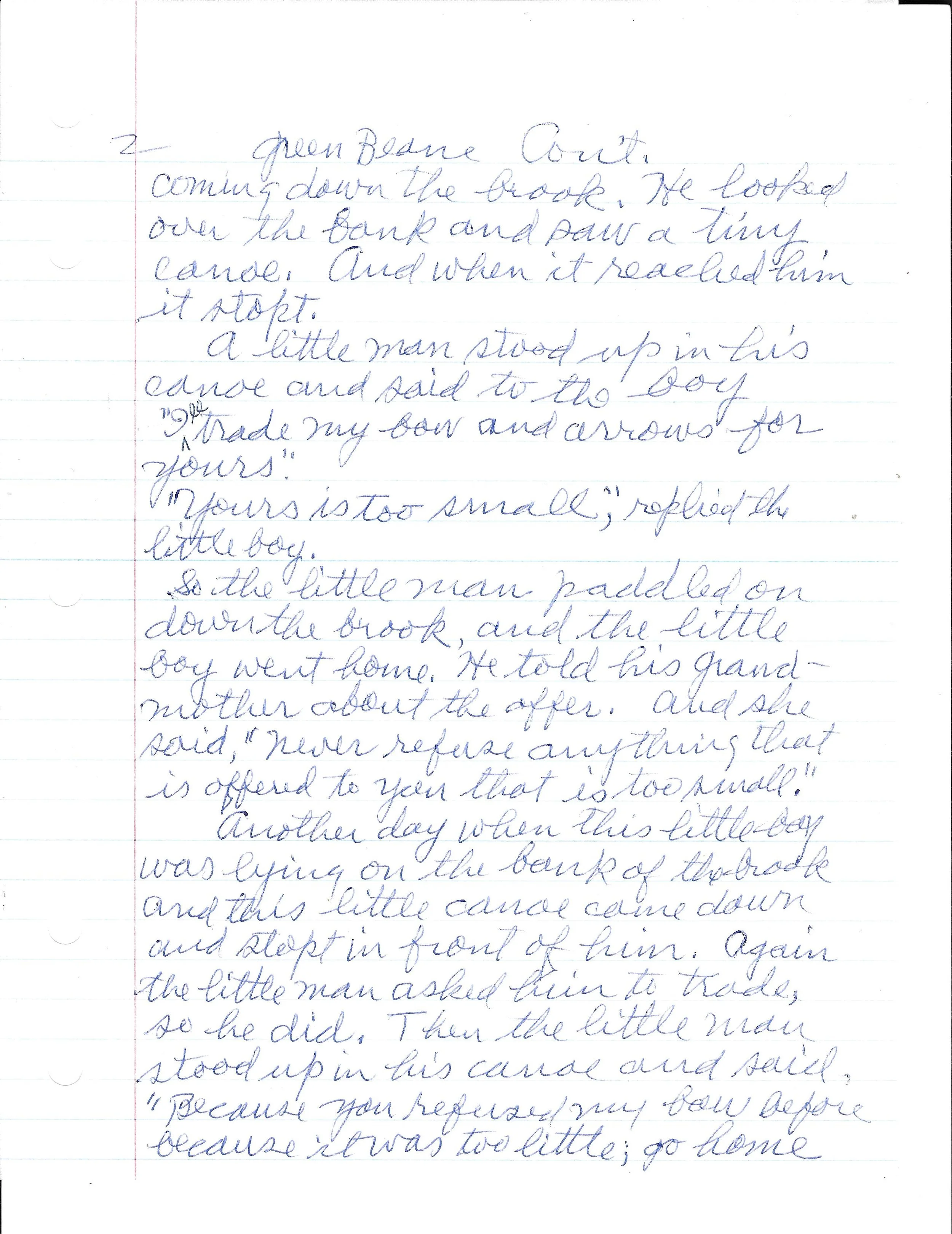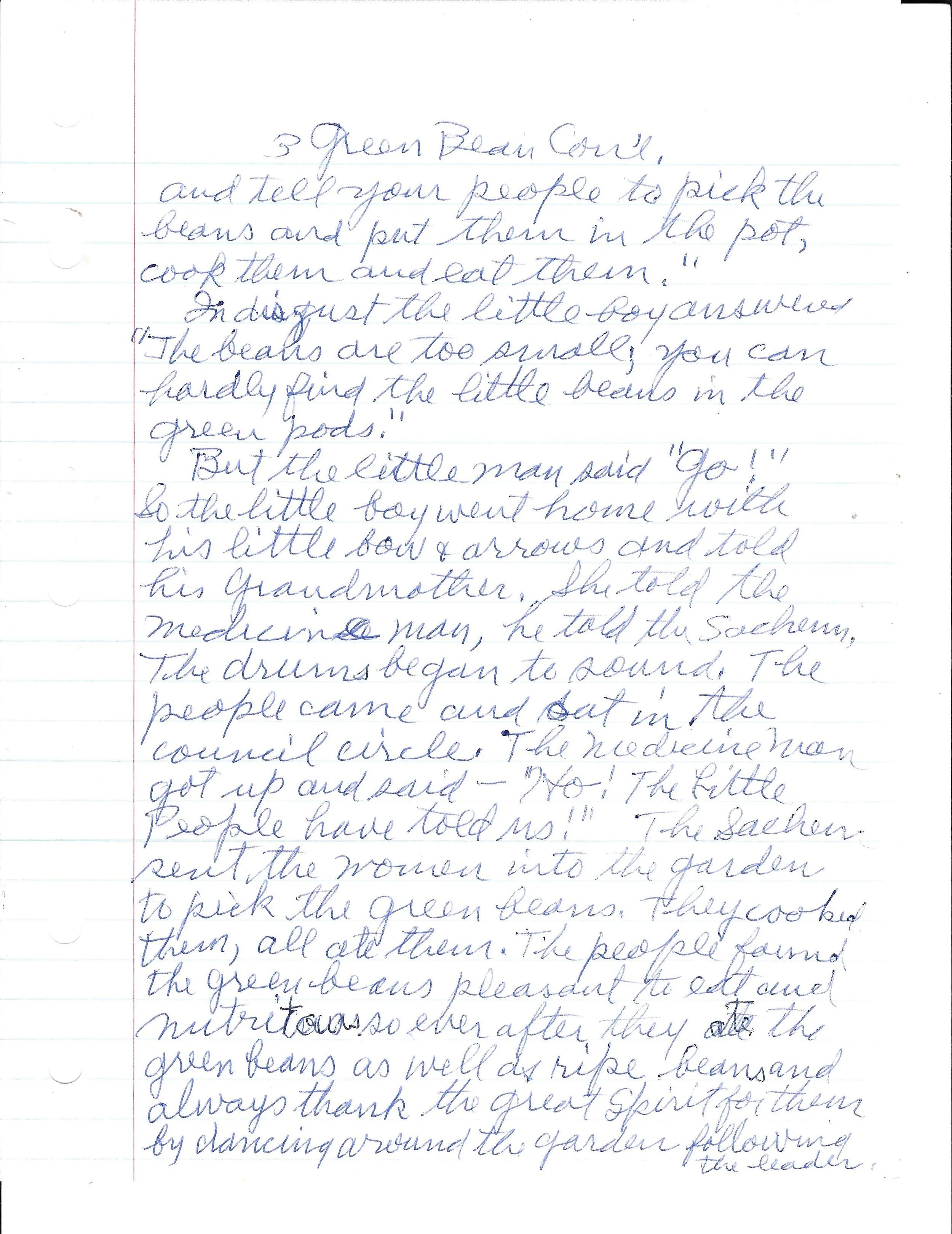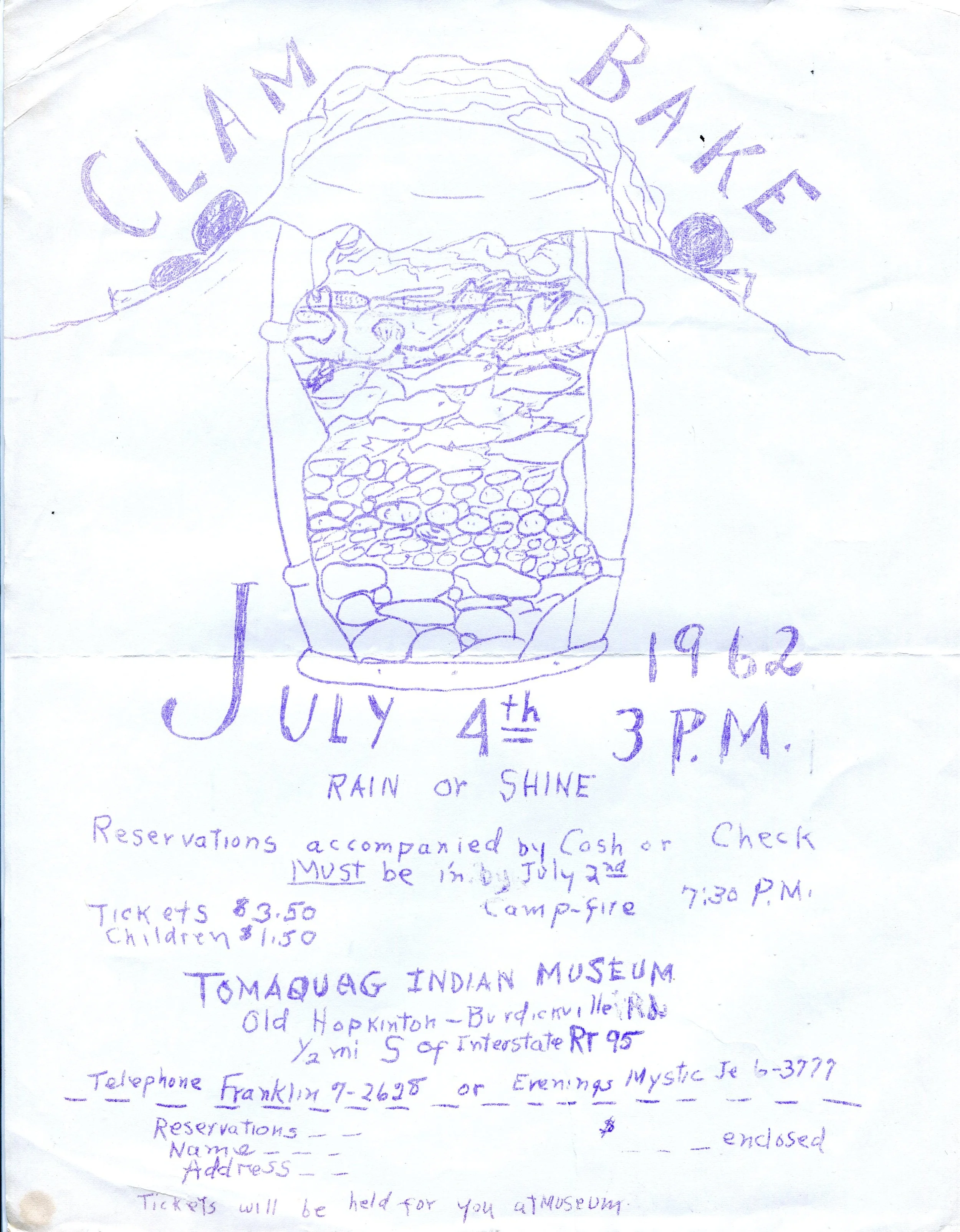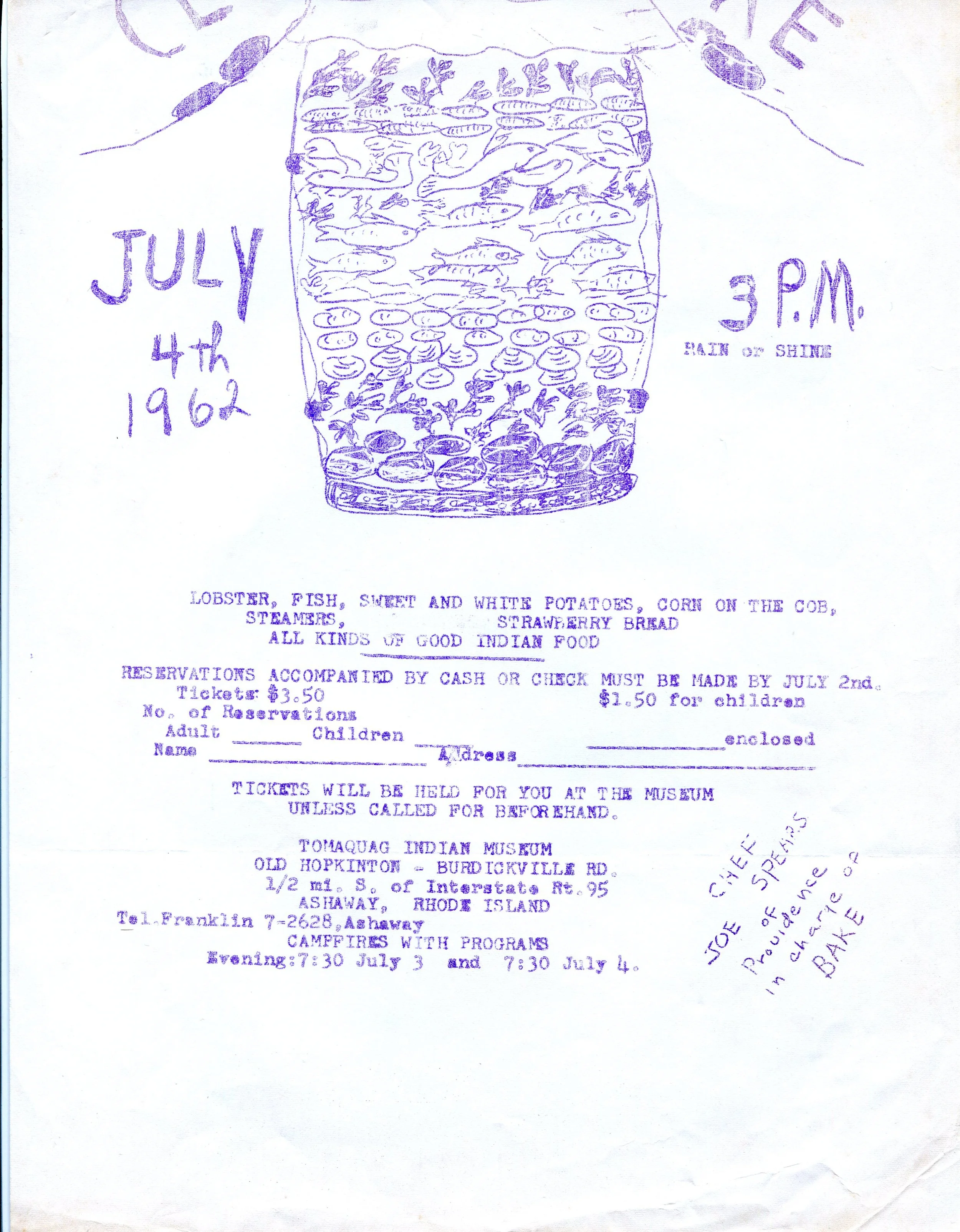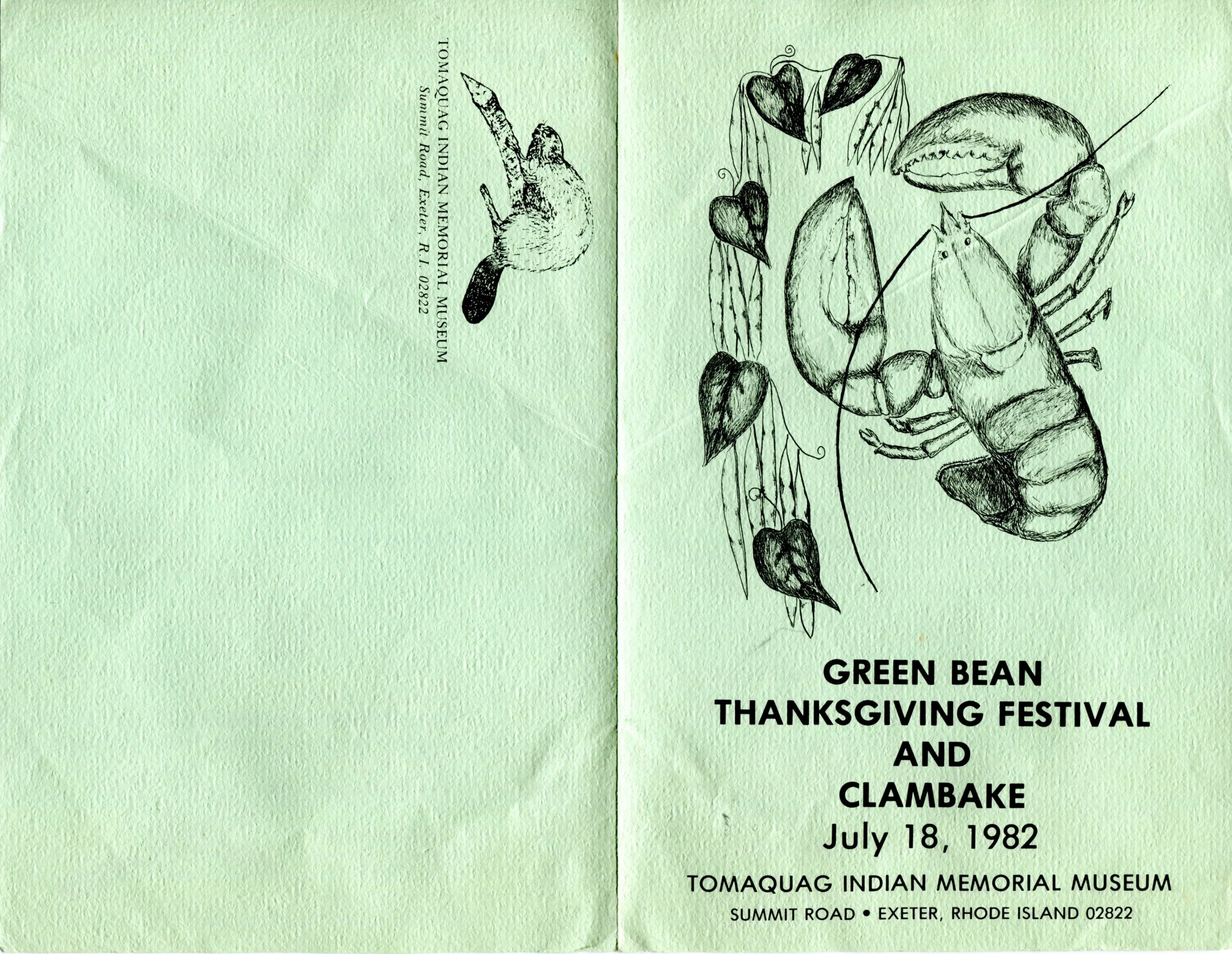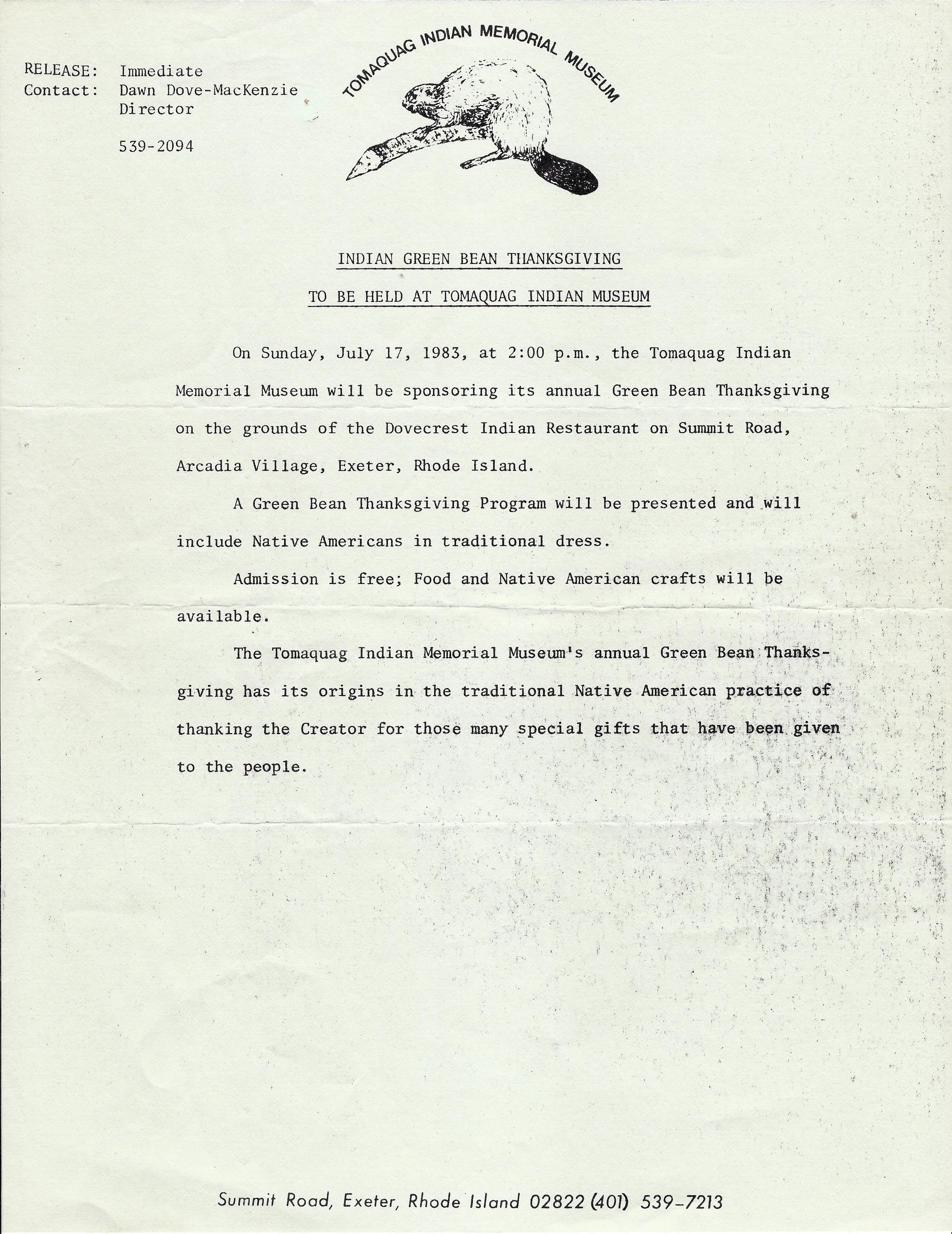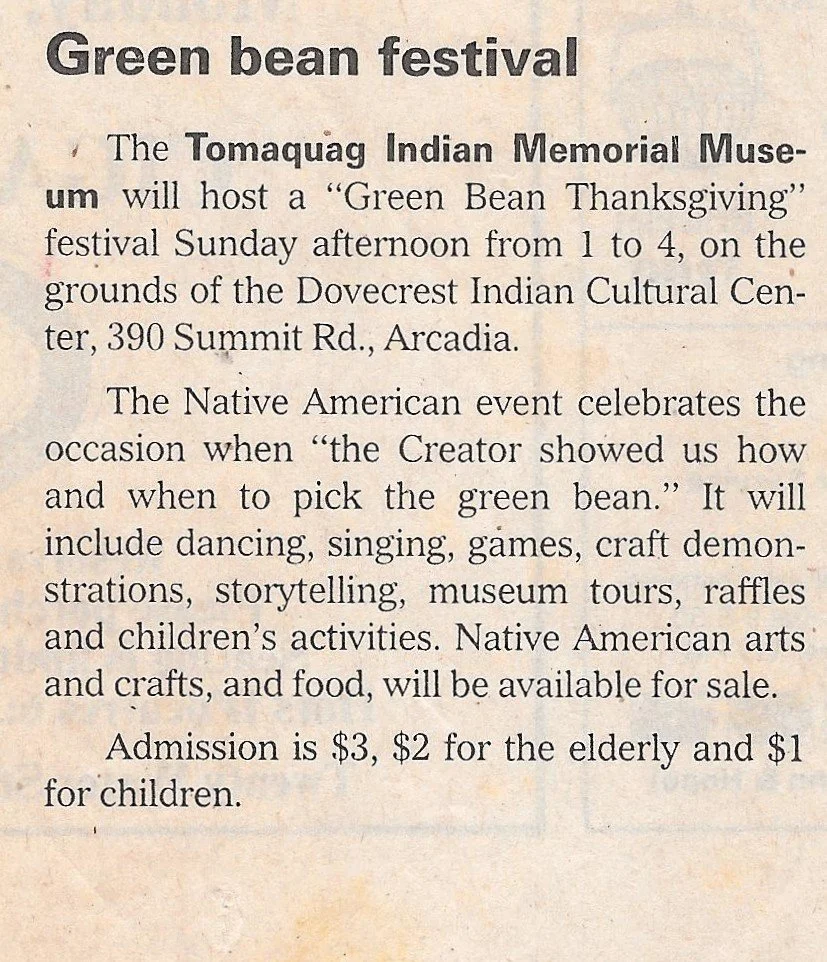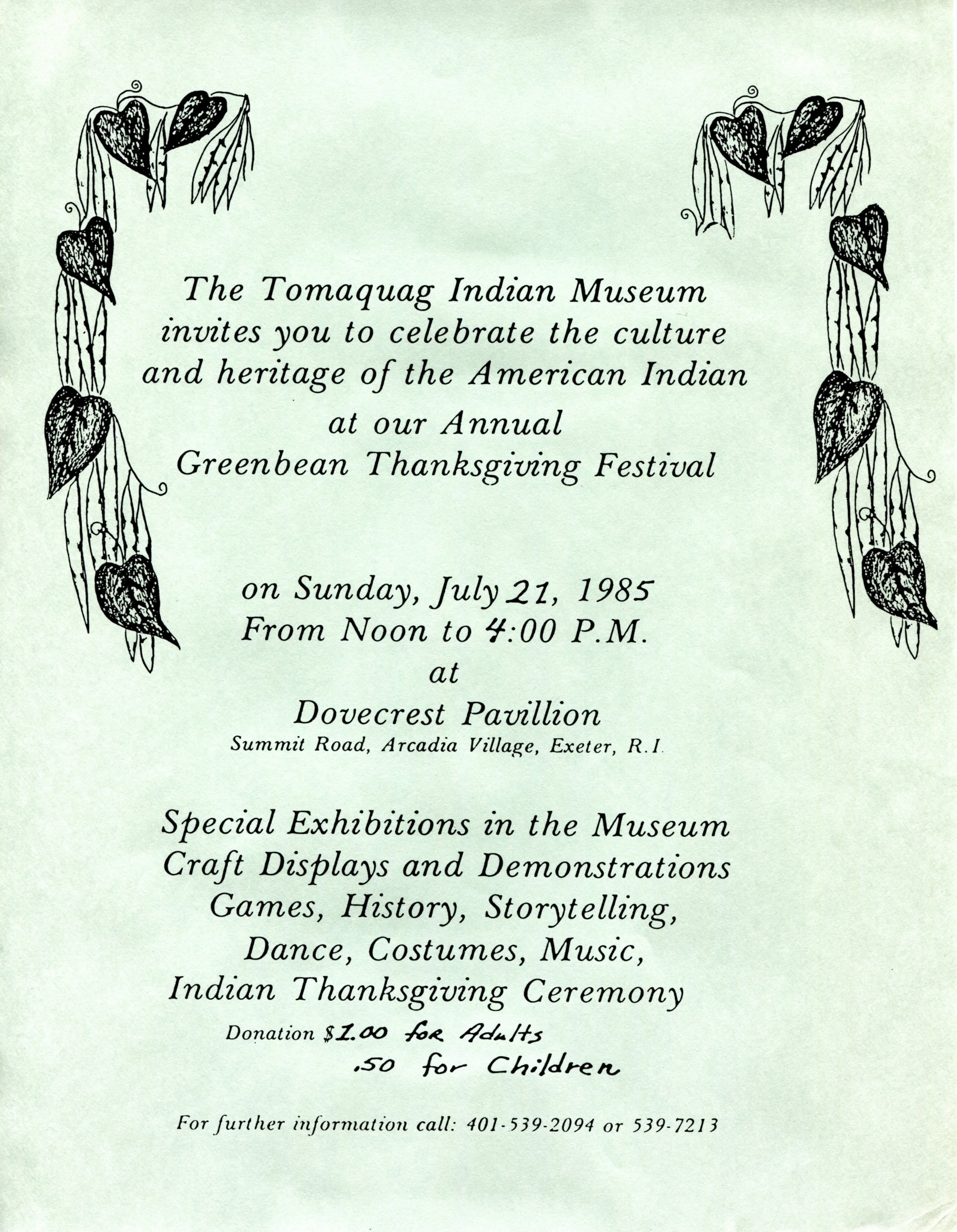From The Archives: Green Bean Thanksgiving
Belonging(s): “A close relationship among a group and personal or public effects
“Asco wequassinummis, neetompooag” (Hello my friends)!
Hello! And welcome to another installment of the Belongings Blog’s From the Archives series where Collections and Archive Manager Anthony Belz shares some of the most interesting items found in the Tomaquag Museum Archive. In this installment, we will be exploring the story of Green Bean Thanksgiving how it has been celebrated at the Tomaquag Museum over the years. Green Bean Thanksgiving is one of the thirteen moons celebrated each month and are often associated with seasonal change, especially when it comes to natural resources, namely food available during those times. The green bean, one of the Three Sisters of corn (maize), beans and squash, have been the cornerstone of Indigenous agriculture and diet since the Woodland Period.
The Tomaquag Museum currently hosts three Thanksgivings a year, Strawberry Thanksgiving in June, Cranberry Thanksgiving in September and Nikkomo in December. Until 1986, the Tomaquag Museum also celebrated Maple Sugar Thanksgiving in March and Green Bean Thanksgiving in July coinciding with the availability of shellfish with a traditional Clam Bake. The Tomaquag Museum Archives contains a small amount of material documenting Green Bean Thanksgiving through the years, notably in the early 1960s when it was located in Ashaway (Hopkinton) and the early to mid 1980s after it located to Dovecrest in Exeter. Our archive contains promotional flyers, newspaper clippings and press releases. Most importantly, the Archive has two handwritten stories (which have slightly different introductions) by Red Wing from her papers about the origins of eating the green bean and how it came to be a staple of the Indigenous diet.
13 Moons (Thanksgivings) Events, 1963. Tomquag Museum. Tomaquag Museum Archives.
Tomaquag Museum Circle of Events Flyer. ca. late 1970s. Tomaquag Museum Archives.
Green Bean. “Little People.” Handwritten Story by Red Wing. Page One. No date. Red Wing Papers. Tomaquag Museum Archive.
Green Bean. “Little People.” Handwritten Story by Red Wing. Page Two. No date. Red Wing Papers. Tomaquag Museum Archive.
Green Bean. “Little People.” Handwritten Story by Red Wing. Page Three. No date. Red Wing Papers. Tomaquag Museum Archive.
Green Bean Thanksgiving
Little People.
Many moons ago a little boy took his bow and arrow and went out to walk. It was in the moon of berries and flowers which is middle of warm season.
He came to a brook and laid down on it bank. It was a warm hazy afternoon and he soon felt very drowsy. He almost asleep when he heard a great splashing coming down the brook. He look[ed] over the bank and saw a tiny canoe coming toward him. And went[when] it reached him, it stopt [stopped] right in front [of] him, and a little man stood up in his canoe and said to the boy, “I’ll trade my bow and arrow, for your bow and arrow”
The little [boy] answered, “Yours is too small!” So the little man paddled on down the brook.
The little [boy] told his grandmother when he got home and she said, - “Never refuse anything that is offered to you because it is too small.”
So another day when he was out there lying on the bank of the brook, he heard the splashing again and the little man stopt [stopped] in front of him and asked him again to trade. The little boy traded. “Because you refused my bow before because it was too little, you go home and tell your people to pick the beans, put them in the pot, cook them and eat them. The little boy said, “They are green, the beans are too small, you can hardly find the tiny beans in the green pods.”
And the little man said, “Go!” So the little boy went home and told his grandmother, she told the medicine man, he told the Sachem and the sachem called a council.
He said, “The little people have told us,” so they sent the squaws into the garden to pick the green beans. They broke them in pieces and put them in the pot, cooked them and all sat down and ate.
The found out that they could eat the green beans as well as the ripe beans so they had a ceremony of Thanksgiving for the Green Beans. This comes middle of July. The dance is like follow the leader game. They followed the directions of the “little people” so in the dance all follow the leader.
Green Bean. 3rd Sunday in July. Page One. Unknown Year. Red Wing Papers. Tomaquag Museum Archives.
Green Bean. 3rd Sunday in July. Page Two. Unknown Year. Red Wing Papers. Tomaquag Museum Archives.
Green Bean. 3rd Sunday in July. Page Three. Unknown Year. Red Wing Papers. Tomaquag Museum Archives.
Green Bean, 3d Sun. in July
A long time ago, in the great beyond, the American Indians are their ripe beans. They had several varieties of them to bake, stew or make succotash. But when they found out they could eat the green bean as well as the ripe ones, it was necessary to thanks their Creator for a new dish.
Now we have a Green Bean Thanksgiving in the middle of the summer, with songs, dances and prayers of thanks to our Creator.
The legend is this.
A little boy took his bow and arrows and went out to walk on a warm summer afternoon. It was in about what is your July now. He rambled thru woodlands and valleys. By & by he rested by a brook as he stopped to drink. He laid down on the bank of the brook. It was a warm day. And as he was lying there almost asleep, he heard a great splashing coming down the brook. He looked over the bank and saw a tiny canoe. And when it reached him it stopped.
A little man stood up in his canoe and said to the boy “I’ll trade my bow and arrows for yours.”
“Yours is too small,” replied the little boy.
So the little boy man paddled on down the brook, and the little boy went home. He told his grandmother about the offer. And she said, “Never refuse anything that is offered to you that is too small.”
Another day when this little boy was lying on the bank of the brook and this little canoe came down and stopped in front of him. Again the little man asked him to trade, so he did. Then the little man stood up in his canoe and said, “Because you refused my bow before because it was too little, go home and tell your people to pick the beans and put them in the pot, cook them and eat them.”
In disgust the little boy answered “The beans are too small, you can hardly find the little beans in the green pods.”
But the little man said ‘go!” So the little boy went home with his little bow & arrows and told his grandmother. She told the medicine man, he told the Sachem. The drums began to sound. The people came and sat in the council circle. The medicine man got up and said - “Ho! The Little People have told us! The Sachem sent the women into the garden to pick the green beans. They cooked them, all ate them. The people found the green beans pleasant to eat and nutritious. So ever after, they ate the green beans as well as ripe beans and always thank the Great Spirit for them by dancing around the garden following the leader.
Green Bean Thanksgiving Clam Bake Flyer. July 4, 1962. Version One. Tomaquag Museum Archives.
Green Bean Thanksgiving Clam Bake Flyer. July 4, 1962. Version Two. Tomaquag Museum Archives.
Indians From Three States Note Indian String Bean Thanksgiving. Unknown Newspaper. Unknown Year. ca. 1960s. Tomaquag Museum Archives.
Today We Honor The Green Bean. Joann Ryding. The Times. 1976. Tomaquag Museum Archives.
Greenbean Festival Is Planned. Westerly Sun, Westerly, Rhode Island. July 2, 1982. Tomaquag Museum Archives.
Green Bean Thanksgiving Festival and Clambake Program Front and Back Pages. July 18, 1982. Tomaquag Museum Archives.
Green Bean Thanksgiving Festival and Clambake Program Second and Third Pages. July 18, 1982. Tomaquag Museum Archives.
Green Bean Thanksgiving Press Release. July 1983. Tomaquag Museum Archives.
Green Bean Festival Announcement. Unknown Newspaper. Unknown year. Tomaquag Museum Archives.
Greenbean Thanksgiving Festival Flyer. July 21, 1985. Tomaquag Museum Archives.

